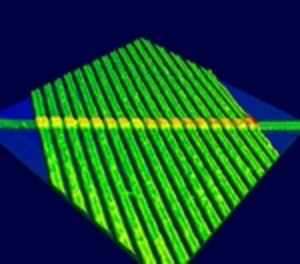- This is some really awesome science. http://tinyurl.com/c96p7e Perhaps a method for nanotech machines to communicate? #
Powered by Twitter Tools.
Powered by Twitter Tools.
Powered by Twitter Tools.
Powered by Twitter Tools.
Powered by Twitter Tools.
Ok, well not really the evolution of time in the sense that time is everwhere in the universe and is an innate feature of it. Instead this video shows the evolution of a clock. It is a very elegant representation of how a genetic algorithm can evolve surprising and different solutions to a problem. For anyone that doesn’t really understand genetic algorithms this video can give you a feel for how they work. It is quite exciting to see a solution evolve from a simple program.
This video actually comments on the long standing debate between creationism vs evolution. I do not wish to comment on that debate, I simply want to educate on the use of evolutionary algorithms. We can leave creationism vs evolution to those who enjoy the debate. If you would like to jump ahead to the beginning of the experiment go to 1:34 in the video.
Powered by Twitter Tools.
Achieving a scientific discovery has been the sole domain of humans for quite some time. However, artificial intelligence is starting to catch up. Enter “Adam” an artificially intelligent robot with the tools to analyze biological data, formulate a novel hypothesis about that data, derive a set of tests to verify the hypothesis and then carry out those tests, and present conclusions from the data!
Adam’s repeated experiments resulted in the system identifying a few unknown genes in baker’s yeast that work together to form an orphan enzyme, this relationship was not previously known and Adam independently identified it.
Tools like this can allow human researchers to think at even higher levels, theorizing about broad spectrum experiments and leaving the systems to explore the frontier for them.
Doing a little technical work with Automatons Adrift right now. I just upgraded the wordpress to 2.7.1. I might even change the theme. Though if I can’t find something I really like I will probably alter the code of this theme instead.
Just an FYI!
Right now we have resistors, capacitors, and incutors we also have four basic circuit variables current, voltage, charge and flux. I am not an engineer but my understanding is, that with these variables you should be able to have four different components and not just three. The fourth component known as a memristor was first theorized in 1971 by Leon Chua. This theoretical fouth component would have properties that were not reproducable by the other three components alone or in any combination.
Both New Scientist and an even more mainstream magazine Maximum PC have reported on the memristor. This component is simply that big a breakthrough!
 The memristor is indeed different from its brothers. When a charge is passed through the circuit in one direction its resistance increases, when it is passed through the other direction it decreases. This amount of resistance is analog as well. This means a memristor can store values that don’t just equate to one or zero although their first use will probably be to make solid state memory that is faster than any memory that already exists and has a data density greater than a factor of ten from todays solid state memory like flash memory. It is much less volatile than flash memory as well so it will last longer, and the state of the memristor can be read using similar techniques to todays memory cirtuits so it it doesn’t require any fundamental changes to underlying hardware.
The memristor is indeed different from its brothers. When a charge is passed through the circuit in one direction its resistance increases, when it is passed through the other direction it decreases. This amount of resistance is analog as well. This means a memristor can store values that don’t just equate to one or zero although their first use will probably be to make solid state memory that is faster than any memory that already exists and has a data density greater than a factor of ten from todays solid state memory like flash memory. It is much less volatile than flash memory as well so it will last longer, and the state of the memristor can be read using similar techniques to todays memory cirtuits so it it doesn’t require any fundamental changes to underlying hardware.
Since memristors can store large amounts of data in such a small area they are perfect for memory components in nanoscale machines, the ultimate new automata of the future. They can also double as processor components that are dynamically changed as needed. So not only can the memristor function as a memory it can be made to function as a processor as well.
Memristors due to their analog nature function very similarly to human neural networks. The memristor can retain data from reinforcement learning very easily, a few hundred memristors can simulate a full human neuron in a similar amount of space.
Memristors are truly an amazing breakthrough and could lead to a paradigm shift in toadys technology.
Yep, it is been a while since I blogged. You start playing a game with a highly addictive nature, and blamo, you haven’t blogged in a couple months.
That’s ok though, there have simply been too many cool breakthroughs the last couple weeks that I just couldn’t ignore and I had to blog about. Keep an eye out for posts, they are starting again.